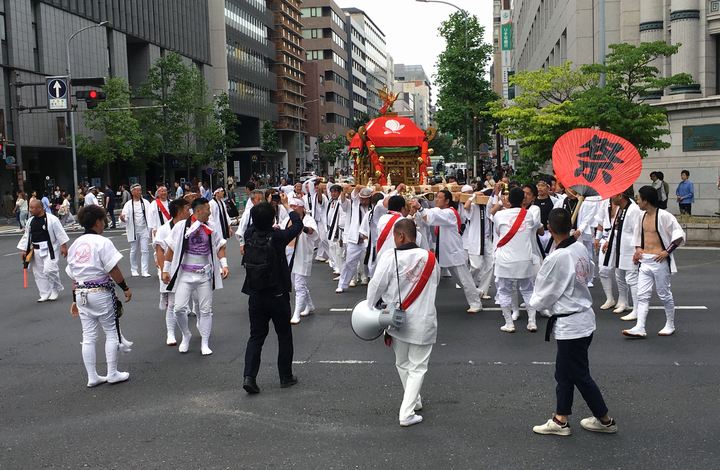
On May 19, the Hanjo matsuri (festival), Mikoshi parade at Hanjo-jinja Shrine in Kyoto, a portable shrine parade of the Hanjo-jinja Shrine, known for its prosperity in business, was held.
With the Mikoshi (portable shrine) carried by men parading along Muromachi street and Shinmachi street in the Ujiko (People who live and worship in the area) district with shouts of “Hoit, hoit” and “Hanjo, Hanjo”.
“Hanjo” means prosperity.
At the intersection of Shijo-Karasuma, the busiest street in Kyoto, the Mikoshi were performed at a street turn, and at Ikenobo Junior College, located by the Kyoto Economic Center, the Mikoshi were placed and a temporary Otabisho (Place where the Mikoshi takes a rest during the procession) was set up.
The bell of prosperity, which visitors could receive when they visited the shrine, had the auspicious words, “Let people be prosperous, let dreams be prosperous, and let the town and Japan be prosperous.
If you come across the Mikoshi parade once a year, it may be a sign of prosperous business.
The history and origin of Hanjo-jinja Shrine and Hannyo-zuka are introduced in the following article. Please take a look if you like.
Hanjo Matsuri at Hanjo-jinja Shrine

Hanjo-jinja Shrine is located in Shimogyo-ku, Kyoto, about a 10-minute walk from Shijo-Karasuma.
Hanjo-jinja Shrine is a small shrine located between Muromachi street and Shinmachi street, a little west of Karasuma Takatsuji, where the head office of the Bank of Kyoto is located.
Hanjo-jinja Shrine is well known for its prosperity of business.
The area around Hanjo-jinja Shrine has long prospered as a Kimono (Japanese traditional clothing) wholesale district, and the area has always had a large number of merchants.
Hanjo-jinja Shrine holds an annual festival called “Shinkosai” in May every year, and during the “Hanjo Matsuri” the Mikoshi (portable shrine) parade, built in the Edo period, parades around the Hanjo-jinja Shrine.
This annual festival was suspended due to World War II, but was revived and the Mikoshi parade resumed in 2013.
In the beginning, the Mikoshi was carried on a cart, but in recent years it has been carried by hand by men.
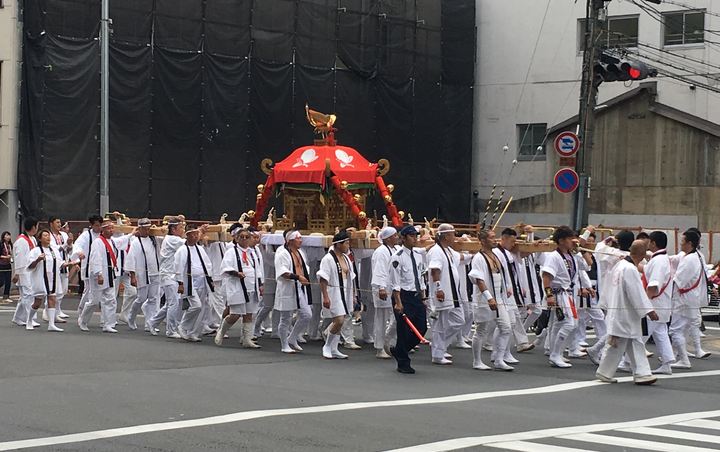
Start time of Mikoshi parade
The festival begins at 10:00 a.m., and the Mikoshi parade starts at 1:00 p.m.
The parade starts from “Hannyozuka”, with a break for entertainment along the way.
The parade runs east to west from Karasuma street to Nishinotoin street, and north to south from Shijo street to Matsubara street.
At Shijo-Karasuma, the parade stops at the intersection to perform the highlight of the festival “Tujimawashi”.
“Tujimawashi” is an event in which the Mikoshi is made to circle around in an intersection.

In addition, Ikenobo Junior College has set up a temporary Otabisho, where visitors are allowed to visit the Mikoshi.
If you are a businessman or manager, visiting the shrine may bring you good fortune for prosperous business.

Hanjo matsuri, Mikoshi parade
The day of the festival was cloudy, but neither hot nor cold, just the good weather for the Mikoshi parade.
The Mikoshi is marching through the Muromachi area where Kimono wholesalers and manufacturers lined the streets.

The Mikoshi at Hanjo-jinja Shrine has been passed down from generation to generation since the Edo period.
Due to World War II, the parade ceased for 70 years, ending in 1941, but was revived in 2013.

The mikoshi is led by a person holding up a ”Kenhoko”, sword-shaped halberd, a ritual implement to appease the town’s evil spirits.
Although often seen at festivals in Kyoto, the long, heavy Kenhoko requires a high level of skill on the part of the giver to swing it as if it were bent.
Since the raising of Kenhoko is a ritual event, it is tactless to say that it is dangerous if Kenhoko gets caught in an electric wire.

In front of the rest area, the Mikoshi is presented to pray for the prosperity of the Ujiko’s (People who live and worship in the area) business.
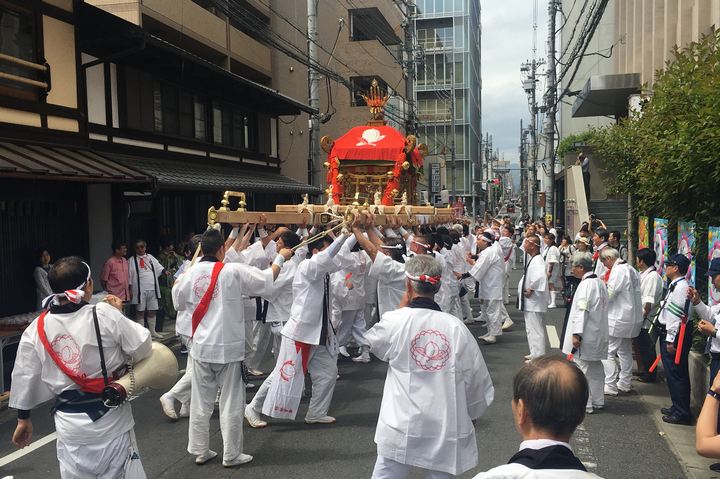
Shinto priests accompany the Mikoshi and enliven the parade with festival music played on flutes and sho (Japanese instruments).
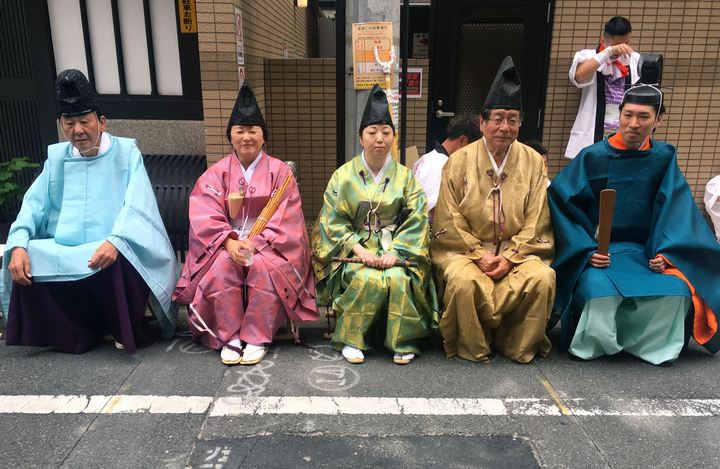
“Tujimawashi” Hanjo matsuri at Shijyo-karasuma
Just before 15:00, the Mikoshi comes to Shijo-Karasuma.
The traffic within the intersection is stopped, and finally the highlight of the Hanjo matsuri, “Tujimawashi” the Mikoshi turning on street, begins.
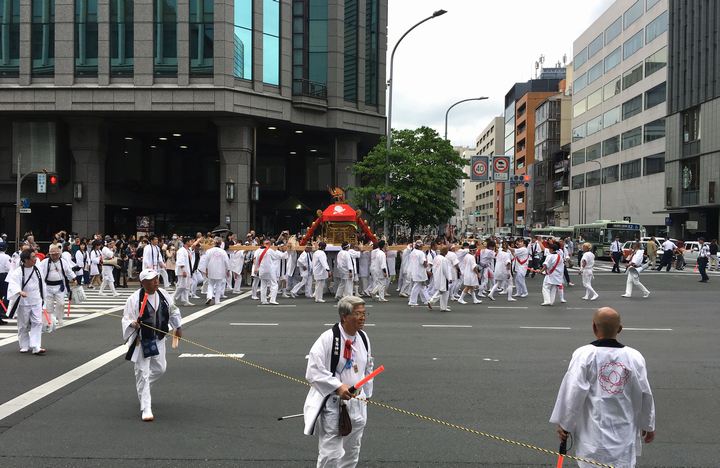
Before the Tujimawashi, the Kenhoko is lifted up in the intersection.

The Mikoshi will be presented in a circle around the intersection of Shijo-Karasuma.




At Shijo-Karasuma, traffic stopped for about five minutes, and onlookers enjoyed the sudden start of the “Tujimawashi” Hanjo Matsuri street parade.
Otabisho at Ikenobo Junior College
Otabisho was set up at Ikenobo Junior College, located in the middle of the parade, where anyone could visit during a break.
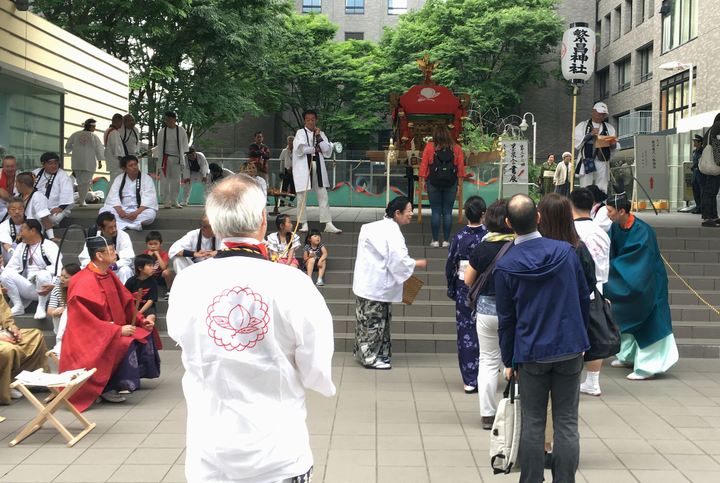
Hanjo-jinja Shrine offers blessings for prosperous business and the fulfillment of a good marriage.

It is a “bell of prosperity” that you can get when you visit the temple. It may bring you good luck if you wear it.

After the visit, there was a Taiko drum performance.
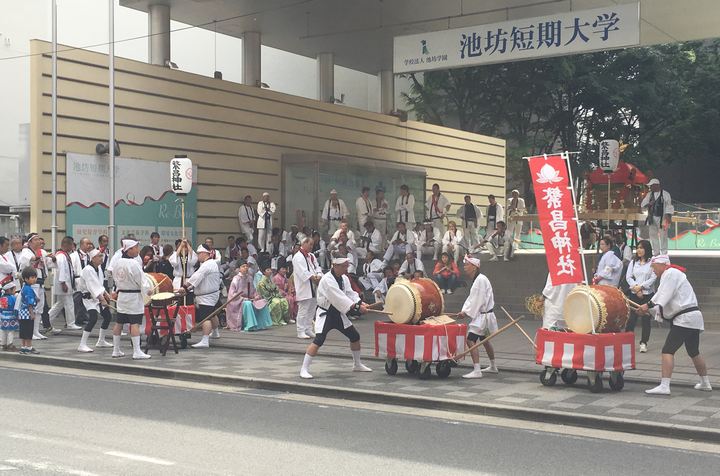
The mikoshi came back to Hanjo-jinja Shrine
The Mikoshi completed its parade and entered Hanjo-jinja Shrine.
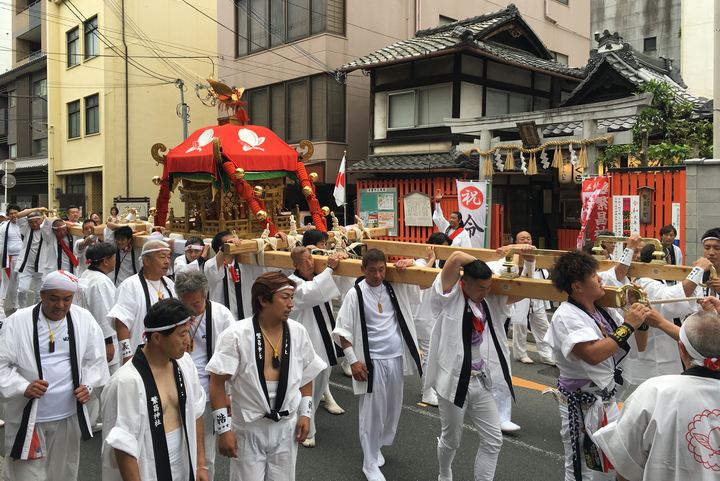
The Mikoshi is performed in front of Hanjo-jinja Shrine.
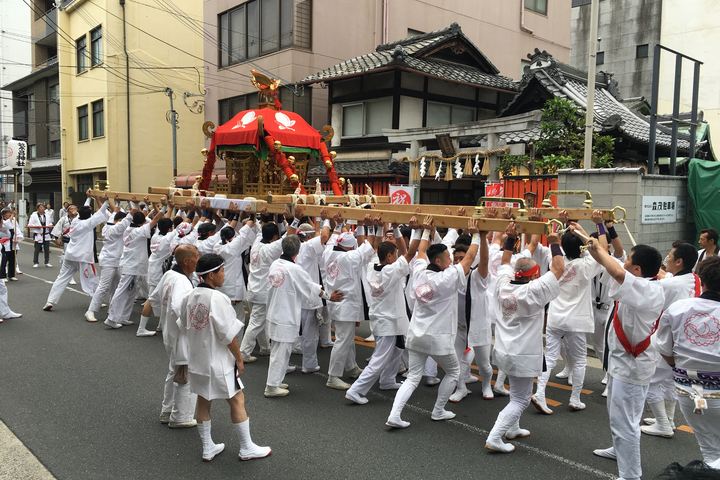
The Mikoshi returns to Hannyozuka, a short distance from here, and enters a storehouse on this side.
Hanjo-jinja Shrine was originally called Hannyo-jinja or Hannyo-no-yashiro, and the origin of Hanjo-jinja Shrine is said to be here.
After the final procession, the Mikoshi is dismantled and the Hanjo Matsuri comes to an end.

The Hanjo Matsuri was blessed with good weather.
If you visit Kyoto, please be sure to pay a visit to Hanjo-jinja Shrine, which is blessed with good fortune for prosperous business.
The history and origin of Hanjo-jinja Shrine and Hannyo-zuka are introduced in the following article. Please take a look if you like.
Japanese Article : 繁昌神社の神輿巡行 繁昌祭り



Comments Please feel free to post your comments!